This Japanese Island Has Lush Landscapes, Hundreds of Hot Springs, and New High-design Hotels
Travel by train (and ferry) around Kyushu, a center of onsen culture.
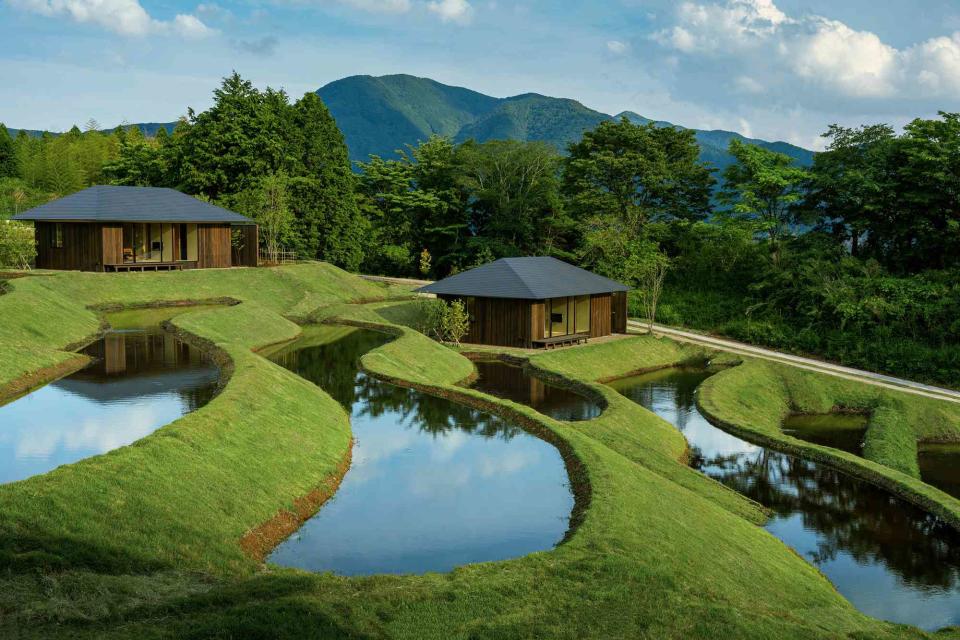
Courtesy of Hoshino Resorts
Guest cabins at Kai Yufuin, a new resort surrounded by rice terraces on the Japanese island of Kyushu.For the third time in 15 hours, I lowered my body into a hot spring on the slopes of a volcanic peak. During my first dip, the previous day, the sun was glinting off the water; the second soak unfolded beneath a nearly full moon. This time, my pre-breakfast bath was shrouded in morning mist and steam.
The urge to spend almost every second immersed in water is impossible to resist at Kai Yufuin, a new ryokan resort on the island of Kyushu. Japan is known for its hot springs, or onsen, many of which have adjoining bathhouses or inns — and Kyushu is home to more than a third of them.
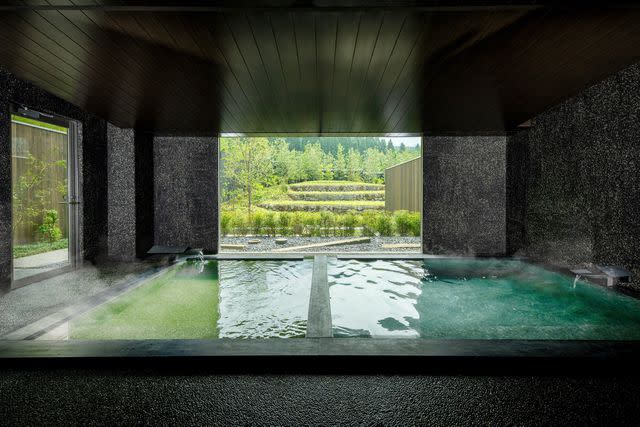
Courtesy of Hoshino Resorts
The onsen at Kai Yufuin.The volcanic landscapes that heat Kyushu’s springs also give the region its citrus groves and a saw-toothed coastline flecked with emerald islets. But despite the natural beauty and seductively laid-back tempo, the island is often overlooked by visitors from overseas. On a recent trip from my home in Kyoto, not long after Japan began opening up to international tourism, I saw firsthand what awaits travelers — including a flashy new bullet train that helps shorten the trip between Fukuoka and Nagasaki, two of the island’s main cities, to 80 minutes.
My journey began with a more sedate form of transport: the forest-green Yufuin No Mori, an old-school sightseeing train complete with polished wooden floorboards and staff in pinafores serving bento boxes. We departed from Hakata Station in Fukuoka, on Kyushu’s northern shore, and cruised past the Mino Mountains, with their remote villages and tumbling waterfalls. Two hours later, we reached the destination that gives the train its name: Yufuin, a spa town known for its hundreds of geothermal springs.
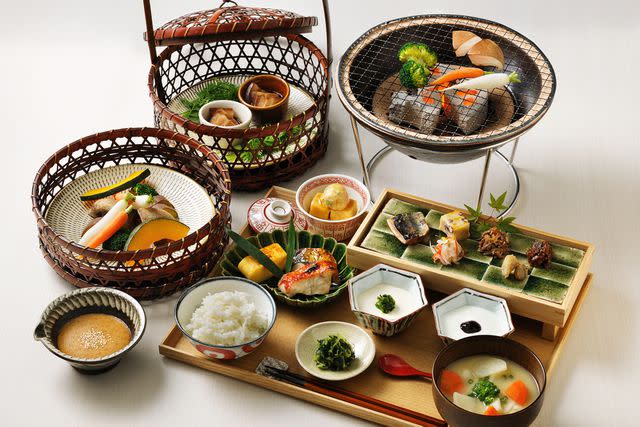
Courtesy of Hoshino Resorts
Kai Yufuin’s traditional breakfast.Yufuin is located in Oita Prefecture — the center of Japanese onsen culture with the most hot springs of any region in the country. Like many hotels in the area, Kai Yufuin has one on site. The property was designed by starchitect Kengo Kuma (Tokyo’s Japan National Stadium; V&A Dundee, in Scotland) and has 45 modern guest rooms in a jewel-green valley of cascading rice fields. It was a backdrop worthy of a woodblock print.
Refreshed by my countryside stay and eager to see more of the island, I headed west to Saga Prefecture — a picturesque region known for its crafts, such as porcelain and furniture, and rich tea heritage. In Ureshino, said to be the 12th-century birthplace of tea in Japan, I tasted several Kyushu specialties at Tea House Tokunaga. The 76-year-old company is a member of the Saga Collective, a group of sustainable, family-run producers in the region.
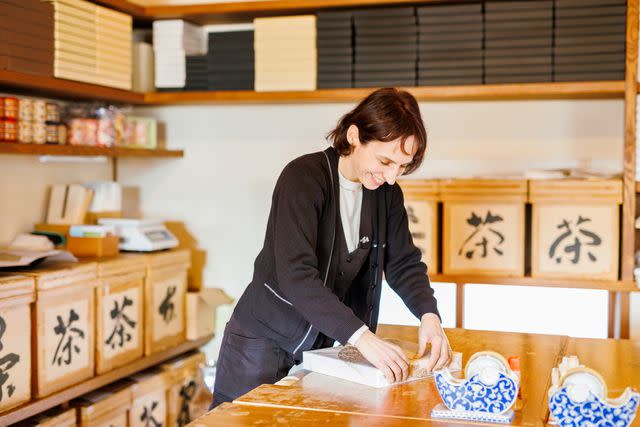
Courtesy of Tea House Tokunaga
Vera Tokunaga, co-owner of Tea House Tokunaga.Next, I headed to the coast, a trip made faster thanks to the Nishi Kyushu Shinkansen, which debuted last fall. The country’s newest bullet train can hit a top speed of 161 miles per hour, and connects the town of Takeo Onsen with Nagasaki, a 45-mile drive, in just 23 minutes. After boarding the streamlined white-and-red train car, I sank into my seat and soaked up the passing views.
Upon my arrival in Nagasaki, I cut through the hilly city by tram and caught a ferry to the Goto Islands. About 60 miles off Kyushu, the archipelago is known for its seafood, udon, tsubaki (camellias), and wild mountainous landscapes. Its largest island, Fukue, is also the setting of one of Japan’s newest design hotels: Goto Retreat Ray.
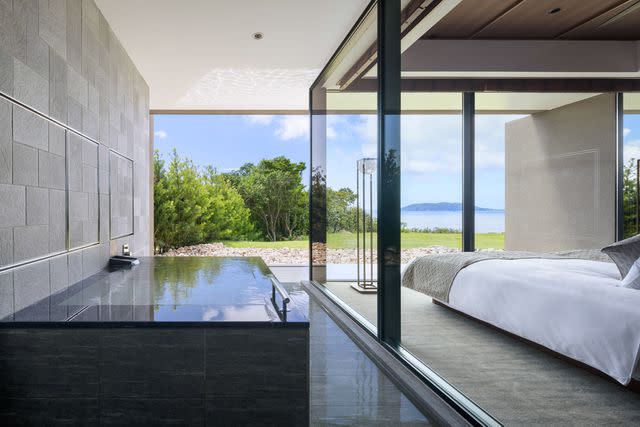
COURTESY OF OKCS RETREAT GOTO RAY
Rooms at Goto Retreat Ray have private outdoor baths.Designed by the late Yukio Hashimoto, its dramatic monochrome spaces have glass walls on one side to fully capture the forested peaks and turquoise water. While there are no hot springs, every room has its own outdoor bath; after checking in, I breathed in the fresh, salty air and lowered myself once again into the hot water, looking out at the sea and sky.
A version of this story first appeared in the April 2023 issue of Travel + Leisure under the headline "The Call of Kyushu."
For more Travel & Leisure news, make sure to sign up for our newsletter!
Read the original article on Travel & Leisure.

